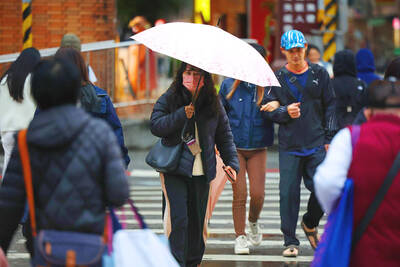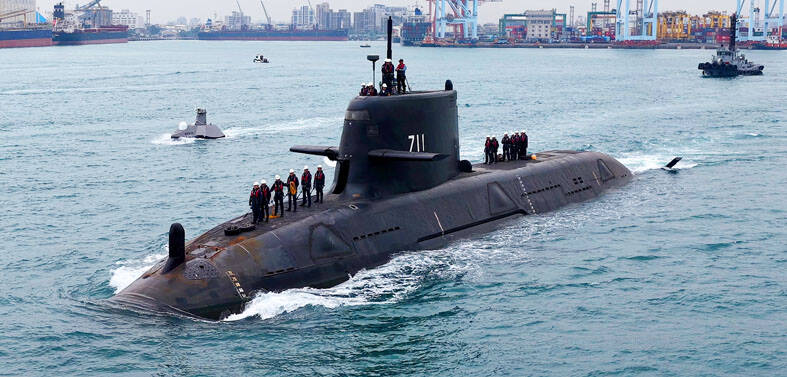Taiwan’s success in building up a superior higher education system has cut into the number of Taiwanese studying in the US, while a shortage of higher education slots in China has meant that the number of Chinese studying in the US has soared, a new study by the Institute of International Education showed.
The study, part of an annual series, showed that in the 2007-2008 academic year, 29,001 students from Taiwan were studying in US colleges and universities, 93 fewer than in the previous year. By contrast, in the 1998-1999 academic year, more than 31,000 Taiwanese students were enrolled in US institutions of higher education.
In the same nine-year period, the number of students from China increased from 51,000 to more than 81,000. By far the biggest jump occurred over the past year, when the number of students jumped sharply, from 67,700 the year before.
Up until the 1987-1988 academic year, Taiwan regularly sent more students to US colleges and universities than any other country. The following year, China outstripped Taiwan and the number of Chinese students has been growing ever since.
The drop in Taiwanese students represents the nation’s success in improving its higher education system compared with a generation ago, said Peggy Blumenthal, the executive vice president of the institute.
“Part of the reason they are not sending as many students is the training the prior generation received. They went back and many of them became faculty members at institutions in Taiwan, where students are able to get the kind of gradual training that before they had to come to the US to get,” she said.
Other regional factors are also responsible for the drop, she said.
“A lot of students from Taiwan interested in business are now studying in China or Japan or [South] Korea,” Blumenthal said. “The development of a regional economy, where so many of the businesses in the mainland [China] are Taiwan owned or where Taiwan funding is involved,” means that “this younger generation sees a lot of attractiveness in studying within the region rather than coming to the United States. And, of course, the universities in Taiwan now have developed to the point where there are enough opportunities at home for them.”
Still, Blumenthal noted, compared with China’s more than 1 billion population, there were still “plenty of students coming from Taiwan.”
Up until 1979, no Chinese students traveled to the US to study, because Washington and Beijing had no diplomatic relations. As part of the switch in relations from Taipei to Beijing, in October 1978 the US and China signed a memorandum of understanding on student exchanges and the first group of Chinese students traveled to the US in early 1979.
So, it took 10 years for the number of Chinese students to outstrip the number from Taiwan. Up until seven years ago, China was the biggest “sender” of students to the US. It was deposed by India, which has remained the biggest source of overseas students, Blumenthal said.
Taiwan remained the sixth biggest source of overseas students in US universities.
China’s accelerating student figures represents that country’s rapid economic growth in recent years.
“China is very rapidly expanding its higher education system, but it cannot keep up with its population because now so many more students are going though secondary school and coming out, and so many are going to undergraduate schools and coming out, that there are not enough graduate seats to accommodate them,” Blumenthal said.
In addition, with the growing middle class, more Chinese parents can afford to send their children to the US.
“The Chinese and US economies are so intertwined that Chinese students can get better jobs if they come back with good English and a good US credential,” Blumenthal said.
Meanwhile, the number of US students studying in both Taiwan and China has jumped in recent years, the survey showed.
While figures for the 2007-2008 academic year were not available, the number of US students in Taiwan rose from 194 in 2004-2005 to 367 the following year and 467, a 27.2 percent rise, in 2006-2007.
While the figure had been increasing through the late 1990s and early 2000s, the figure remained relatively low in that period. At the same time, a record 11,000 US students were enrolled in Chinese graduate institutions in 2006-2007, up 25 percent from the 8,800 the previous year. The year before that, the figure stood at 6,400.
Also See: Ma’s odd opinion on Taiwanese students

US climber Alex Honnold is to attempt to scale Taipei 101 without a rope and harness in a live Netflix special on Jan. 24, the streaming platform announced on Wednesday. Accounting for the time difference, the two-hour broadcast of Honnold’s climb, called Skyscraper Live, is to air on Jan. 23 in the US, Netflix said in a statement. Honnold, 40, was the first person ever to free solo climb the 900m El Capitan rock formation in Yosemite National Park — a feat that was recorded and later made into the 2018 documentary film Free Solo. Netflix previewed Skyscraper Live in October, after videos

NUMBERS IMBALANCE: More than 4 million Taiwanese have visited China this year, while only about half a million Chinese have visited here Beijing has yet to respond to Taiwan’s requests for negotiation over matters related to the recovery of cross-strait tourism, the Tourism Administration said yesterday. Taiwan’s tourism authority issued the statement after Chinese-language daily the China Times reported yesterday that the government’s policy of banning group tours to China does not stop Taiwanese from visiting the country. As of October, more than 4.2 million had traveled to China this year, exceeding last year. Beijing estimated the number of Taiwanese tourists in China could reach 4.5 million this year. By contrast, only 500,000 Chinese tourists are expected in Taiwan, the report said. The report

Temperatures are forecast to drop steadily as a continental cold air mass moves across Taiwan, with some areas also likely to see heavy rainfall, the Central Weather Administration (CWA) said. From today through early tomorrow, a cold air mass would keep temperatures low across central and northern Taiwan, and the eastern half of Taiwan proper, with isolated brief showers forecast along Keelung’s north coast, Taipei and New Taipei City’s mountainous areas and eastern Taiwan, it said. Lows of 11°C to 15°C are forecast in central and northern Taiwan, Yilan County, and the outlying Kinmen and Lienchiang (Matsu) counties, and 14°C to 17°C

STEERING FAILURE: The first boat of its class is experiencing teething issues as it readies for acceptance by the navy, according to a recent story about rudder failure The Hai Kun (海鯤), the nation’s first locally built submarine, allegedly suffered a total failure of stern hydraulic systems during the second round of sea acceptance trials on June 26, and sailors were forced to manually operate the X-rudder to turn the submarine and return to port, news Web site Mirror Daily reported yesterday. The report said that tugboats following the Hai Kun assisted the submarine in avoiding collisions with other ships due to the X-rudder malfunctioning. At the time of the report, the submarine had completed its trials and was scheduled to begin diving and surfacing tests in shallow areas. The X-rudder,